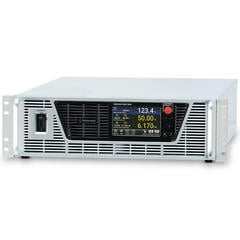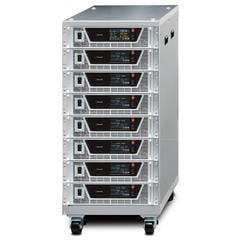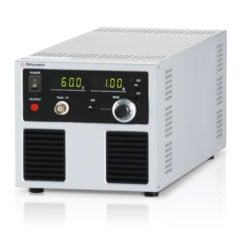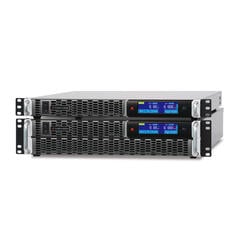
Regenerative Energy Basics
Currently, the use of "Regenerative energy" is so familiar in the energy field, and here's how it works. Regenerative energy well known as regenerative power is a promising energy technology that can promote cost efficiency.
First, we refer to the mechanism and relationship between motor and generator. The motor usually works using electric power. On the other hand, the generator supplies power as its shaft is turned by an external force. Although the two devices have different characteristics, they are the same in terms of the mechanism.
Used as Motor
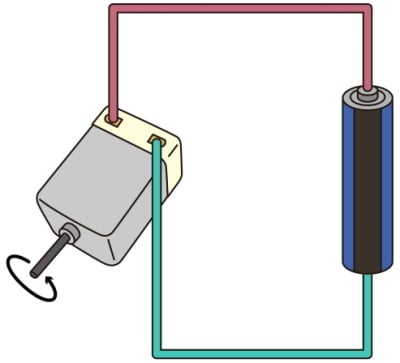
Used as Generator
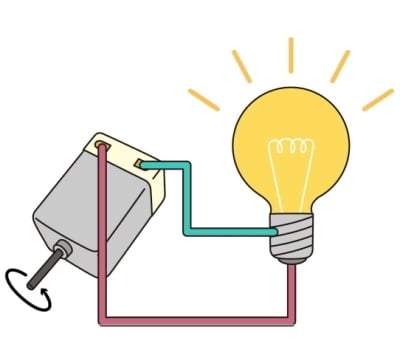
A motor is an electric machine that provides operating power by using electrical energy, and a generator converts operating power into electricity. They play the same part in system. That is to say, such a system where the motor serves as generator accelerates the development of the regenerative energy technology.
Next, we describe the details of the regenerative energy system with a typical example of a railway power supply system. Basically, the power supply to the trains is provided from the overhead wires through the feeder which is installed in parallel with the wire. And, the DC feeding system is widely adopted to apply the supply DC power.
On the other hand, in using brakes on moving trains, the motor itself does not need to supply the power. In order to create the electricity, the power from the train wheels is used to start the motor. The power supply is returned using the overhead wires via pantographs and then, it is used by other trains.

(Creating power as a generator at deceleration)

(Consuming power as a motor at acceleration)
We hope this will help you understand the basics of regenerative energy.
Regenerative Energy Features
Let's move on to "Cost efficiency" and "Longer lifetime of resistors" as one of the main features of regenerative energy.
Energy Efficiency
One of the biggest benefits of regenerative energy is that it contributes to energy conservation. So far, the braking energy was emitted as heat. In other words, the energy failed to be efficiently utilized and caused wastage.
So, it is really beneficial to store the energy to make use of it as electricity, which not only prevents energy waste but also leads to significant energy savings. That is why regenerative energy is called "Energy recycling". There are some cases where the ratio of regenerative braking energy is 30% to 40% or more toward the energy obtained by the accelerating trains.
Apart from this, when you want to move something, a lot of force is required to start moving. For instance, when you pedal the bicycle, a lot of power is required to start. In the same way, while a motor requires the highest power when starting up, it can operate on relatively low power during the operation.
Therefore, if the power recovered as regenerative energy is allocated to the places that need it most, we can suppress the peak electricity demand. Such an energy reduction effect will give huge benefits to companies as well. When you use electricity at home, you don't have to pay additional electricity bills even if you use a lot of electricity at one time, and you only have to pay for what you use. On the contrary, concerning factories having corporate contracts, the basic monthly payment of electricity may vary since the contract demand is calculated based on peak power consumption.
The contract demand shows the highest value of the peak electricity demand for each month within the past year. The peak electricity demand indicates the monthly highest value in the average power consumption every 30 minutes. In the case of Tokyo Electric Power Company, if the maximum power demand is increased by 100kW, you will have to pay more by over 120,000 yen for the basic monthly charges alone.
Thus, regenerative energy can help you to reduce power consumption, which will promote energy conservation. Besides, it greatly contributes to the reduction of electricity rates (running cost) in factories.
Longer lifetime of resistors
Another benefit of regenerative energy is extending the life of resistors. Say, for example, when a crane is lowering a load, the external power supply is required for the motor rotation. The electricity generated by the rotation has conventionally been consumed by a resistor. The resistor normally converts the power to heat and dissipates it.
In that case, there is a possibility that it might cause the deterioration of the resistor itself because of the heat. To avoid this, some part of the generated power is recovered by a battery connected in parallel with the resistor. Then, the load against the resistor is reduced, and the heat dissipation of it is also reduced. As a result, it is considered that regenerative energy effectively increases the lifetime of the resistor.
Bidirectional Power Supply with Regeneration Energy
Considering how to store regenerative energy in a battery, bidirectional power supply effectively provides capabilities of regenerative energy. The crane operation generates the regenerative energy that is AC 100 V, or 200 V is converted to DC by an AC/DC converter. And, DC/DC converter is used to adjust the voltage setting for charging.
Conversely, when discharging a charged battery, a DC/DC converter is used to boost the voltage to 100 V or 200 V. And, the energy is converted to AC by a bidirectional converter.
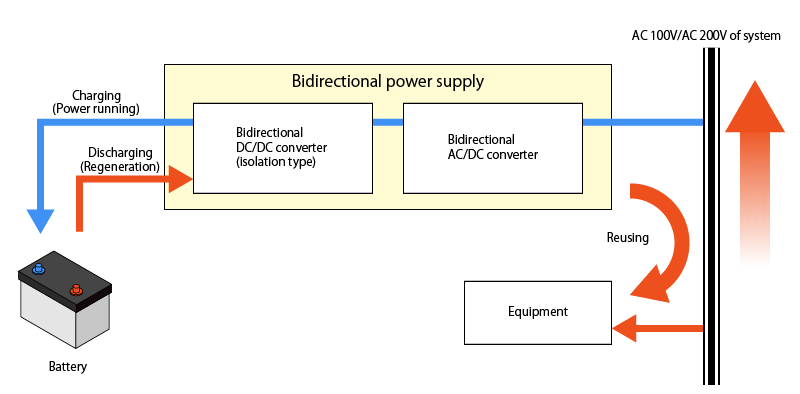
To meet such application requirements, high-performance bidirectional power supplies featuring the regenerative function are all available in a wide lineup of Matsusada Precision. As for more information on basics and benefits; how to use a bidirectional power supply, etc., refer to "How to Use Bidirectional Power Supply."
Regenerative Energy Getting Better and More Familiar
Regenerative energy has become more familiar in recent years following the increasing demand for energy-saving systems. Apart from the applications above, regenerative energy is more available in;
Applications/Devices:
- Train
- Crane Station facility
- Electric vehicle/Hybrid vehicle
- Elevator
- Multistory parking garage
- Escalator
- Factory
If the regenerative energy generated from the train system exceeds the upper limit of consumption, an increase in voltage on the overhead line will occur. This causes the overhead line voltage to rise. If it exceeds the voltage of the receiving system, regenerative power cannot be utilized. It is unable to utilize regenerative power, resulting in a decrease in braking performance (invalidated regeneration).
Aiming to effectively use the extra energy, a "regenerative inverter" is adopted. By converting the DC power to AC power using the product, the surplus power can be reused in the train stations and railroad facilities.
In the fields of electric and hybrid vehicles, the electricity is generated by motor power driven by the tire rotation for braking. Using regenerative energy means the reduction of fuel consumption.
In elevators and multi-story parking lots, regenerative energy is generated when elevators are raised when there are few passengers and lowered when there are many passengers. Such energy is efficiently used in facilities, which leads to energy conservation.
When a down escalator is operated by a large number of passengers, the regenerative energy is generated by the motor. The energy is used in facilities, and it can also be used to stop an escalator gradually rather than suddenly in the event of a power failure.
Future Outlook of Regenerative Energy for Energy Saving
In factories where many machines are operated simultaneously in manufacturing, the regenerative energy is reused by the power supply units. With the regenerative system, for example, the regenerative energy created by unloading with overhead cranes can be reused in the power supply units through a regenerative device.
The power can be reused in other applications required for high-capacity power, implementing better and more efficient power management. Furthermore, along with other renewable energy sources and batteries, regenerative energy offers such a useful system that can continue manufacturing even in the case of power failure caused by disasters.
Consequently, regenerative energy provides a better society and future. Many people believe it is indispensable to promote development in the field of regenerative energy technology as one of the most important sources of energy in the world.
Related Technical Articles
Recommended products
Matsusada Precision manufactures bi-directional DC power supplies that can regenerate power in factories.



